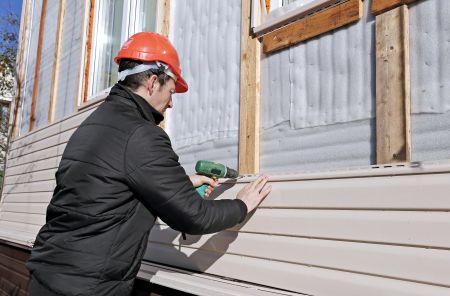Vinyl siding is a popular choice among homeowners for its durability, aesthetic appeal, and cost-effectiveness. However, like any other exterior material, it’s not immune to wear and tear. Over time, you might notice some pieces coming apart or fading. But fret not! With the right approach, these issues can be addressed efficiently, ensuring your home’s exterior remains in top-notch condition.
Understanding the Basics of Vinyl Siding
Vinyl siding is designed to withstand various environmental elements, from harsh sun rays to heavy rain. However, occasional repairs are inevitable. The good news is, many of these repairs are straightforward and can be done without professional intervention.
Why Does Vinyl Siding Come Apart?
If you’ve observed some pieces of your vinyl siding coming apart, it’s essential to understand the root cause. Often, this issue arises due to:
- Expansion and Contraction: Vinyl siding expands and contracts with temperature fluctuations. If nails were installed too tightly during the initial installation, it might restrict this natural movement, leading to damage.
- External Impact: Accidental hits from heavy objects or even hailstorms can cause cracks or breaks in the siding.
- Aging: Over time, the siding might lose its resilience, making it more susceptible to damage.
Steps to Repair Vinyl Siding Effectively
1. Assess the Damage
Before diving into the repair process, take a moment to assess the extent of the damage. Is it just one piece that’s affected, or are multiple sections coming off? This assessment will guide your repair approach.
2. Gather the Necessary Materials
For a successful repair, you’ll need:
- Extra vinyl siding pieces (ensure they match or closely resemble the existing ones)
- Utility knife
- Zipper tool
- Butyl caulk
- Duct tape (for temporary holding)
3. Patching a Small Area
If the damaged area is small, follow these steps:
- Cut around the damaged section, leaving about 2 inches on the edges.
- Remove the cut-out using a zipper tool.
- Cut a patch from the new siding piece, ensuring it fits the cut-out area.
- Apply butyl caulk around the cut-out and place the patch. Use duct tape to hold it temporarily until the caulk dries.
4. Replacing a Larger Panel Section
For more extensive damage:
- Pry out the panel above the damaged one.
- Cut through the panel on both sides without damaging the underlying building paper.
- Remove the cut-out and replace it with a new piece, ensuring it fits perfectly.
Choosing the Right Siding Contractor
While many vinyl siding repairs can be DIY, some situations call for professional expertise. If you’re in Seattle and need assistance, consider reaching out to KV Construction LLC, one of the leading siding contractors in Seattle. With their vast experience in siding install in Seattle, you can be assured of top-quality workmanship and service.
Final Thoughts
Vinyl siding repair doesn’t have to be daunting. With the right tools and techniques, you can restore your home’s exterior to its former glory. And remember, if you ever need professional assistance, KV Construction LLC and other reputable siding companies in Seattle WA are just a call away.
Stay proactive, address issues promptly, and y

